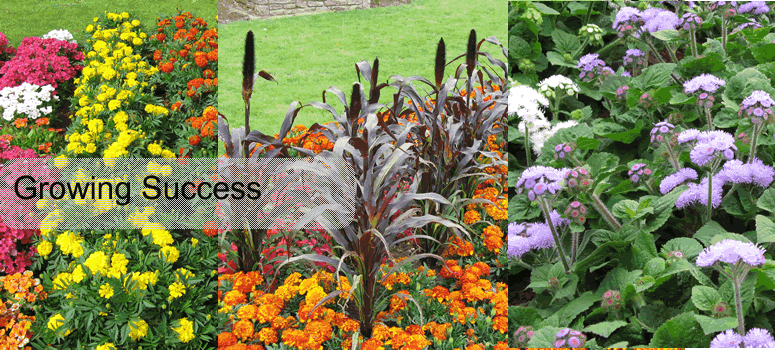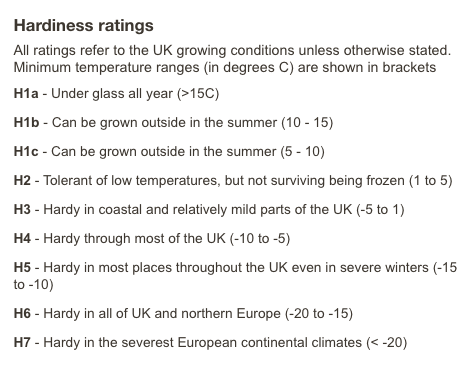
The Hardiness question
One of the most popular types of plants, found in almost any garden, are herbaceous perennials, plants which come back year after year and require very little maintenance. However very few people realise that not all plants sold as perennials in garden centres and supermarkets will come back every year. All our perennial plants should do, as we have trialled them ourselves in our test area, but if you buy from elsewhere you need to be careful.
The major issue is that a plant may be a perennial, but may not survive the winter, this is dependant on where you plant it. If you plant a cordyline in a garden on the seafront, where winter temperatures are not so harsh due to the warm air coming from the sea, it will survive the winter, plant it in Highland Scotland and it’ll almost certainly die.
To try and help many horticultural organisations produce hardiness numbers or zones, which attempt to help you work out if a perennial will be hardy in your garden. If you are looking at these on the internet make sure the website uses UK hardiness zones (these are very different to American or Australian zones, for obvious reasons). The RHS are a good source of information on perennial hardiness and their plant selector details the hardiness levels of almost every plant species you can think of using the zone system.
A simple outline of the system is:

So if you want a plant that should come back the following year we recommend a H4 or above, the vast majority of plants we sell as perennial are in this range. Another consideration is that not all varieties of the same plant are as hardy as each other, the most striking example are penestomen. Those with wider leaves and usually larger, more attractive flowers are semi-hardy (H2-3) while the smaller leaved less aesthetically pleasing varieties are far hardier (H4).
With all this in mind why therefore do plants that are supposedly extremely hardy fail to survive our winters. The answer we think is that in their native environment, in a well-drained soil they may well be hardy to temperatures as low as -25 centigrade but in heavy Hereford clay soil this probably will not be the case. It is our conclusion that it is not so much the cold that kills them but more likely it is the saturated soil that doses the damage. So it may therefore be a good plan to try a selection of different perennials in your garden and see which work the best. A good example of this would be lupins and delphiniums some people find them very easy to over winter forming huge clumps over the years ,others find them impossible to keep for more than the 1st year. It is simply a case of discovering what suits your soil conditions. The other option, is of course to grow them in large pots, which can prove very successful as if the variety is susceptible to being waterlogged, it can be moved to a more sheltered position during the winter months.
